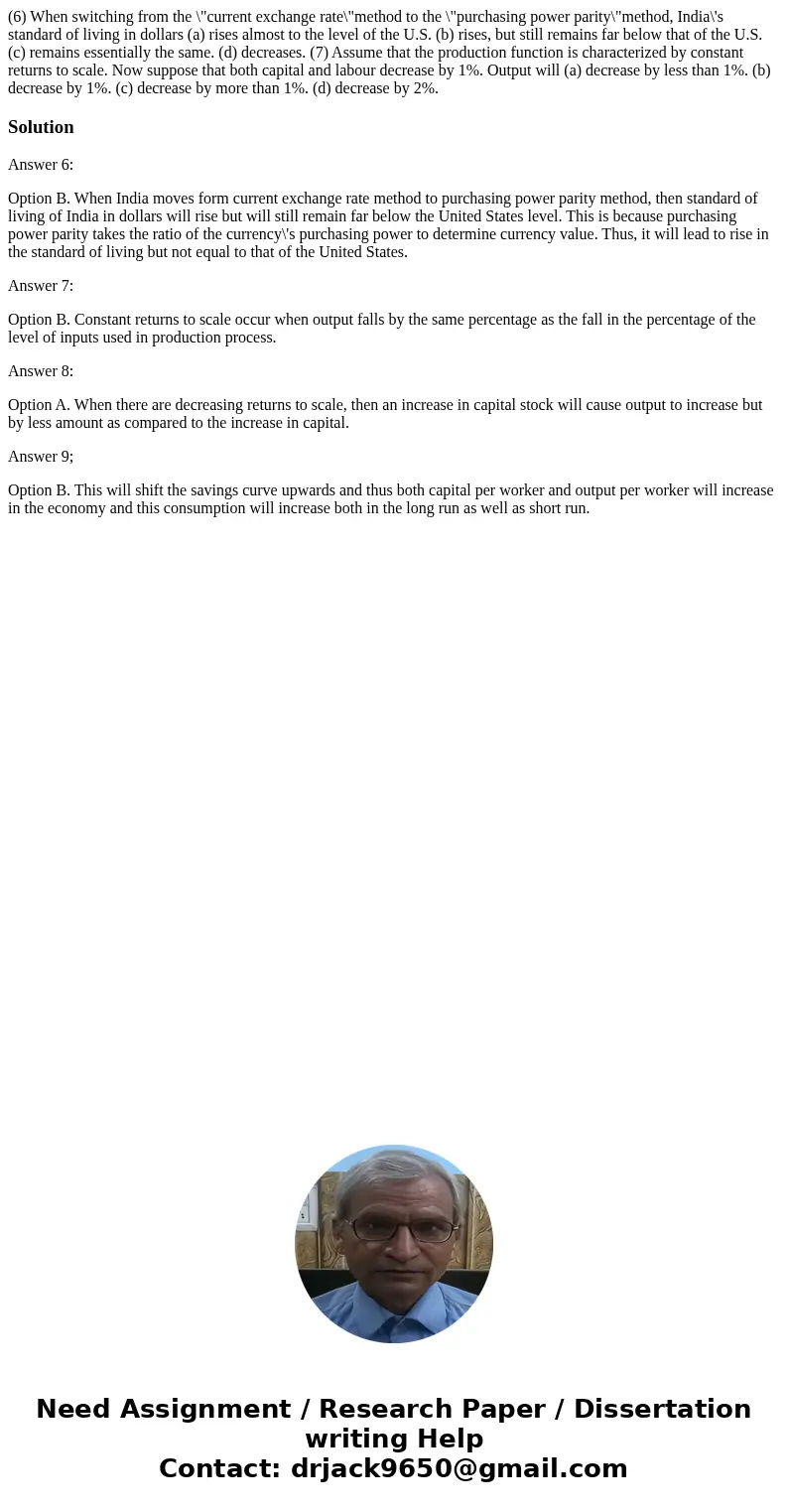6 When switching from the current exchange ratemethod to the
Solution
Answer 6:
Option B. When India moves form current exchange rate method to purchasing power parity method, then standard of living of India in dollars will rise but will still remain far below the United States level. This is because purchasing power parity takes the ratio of the currency\'s purchasing power to determine currency value. Thus, it will lead to rise in the standard of living but not equal to that of the United States.
Answer 7:
Option B. Constant returns to scale occur when output falls by the same percentage as the fall in the percentage of the level of inputs used in production process.
Answer 8:
Option A. When there are decreasing returns to scale, then an increase in capital stock will cause output to increase but by less amount as compared to the increase in capital.
Answer 9;
Option B. This will shift the savings curve upwards and thus both capital per worker and output per worker will increase in the economy and this consumption will increase both in the long run as well as short run.

 Homework Sourse
Homework Sourse